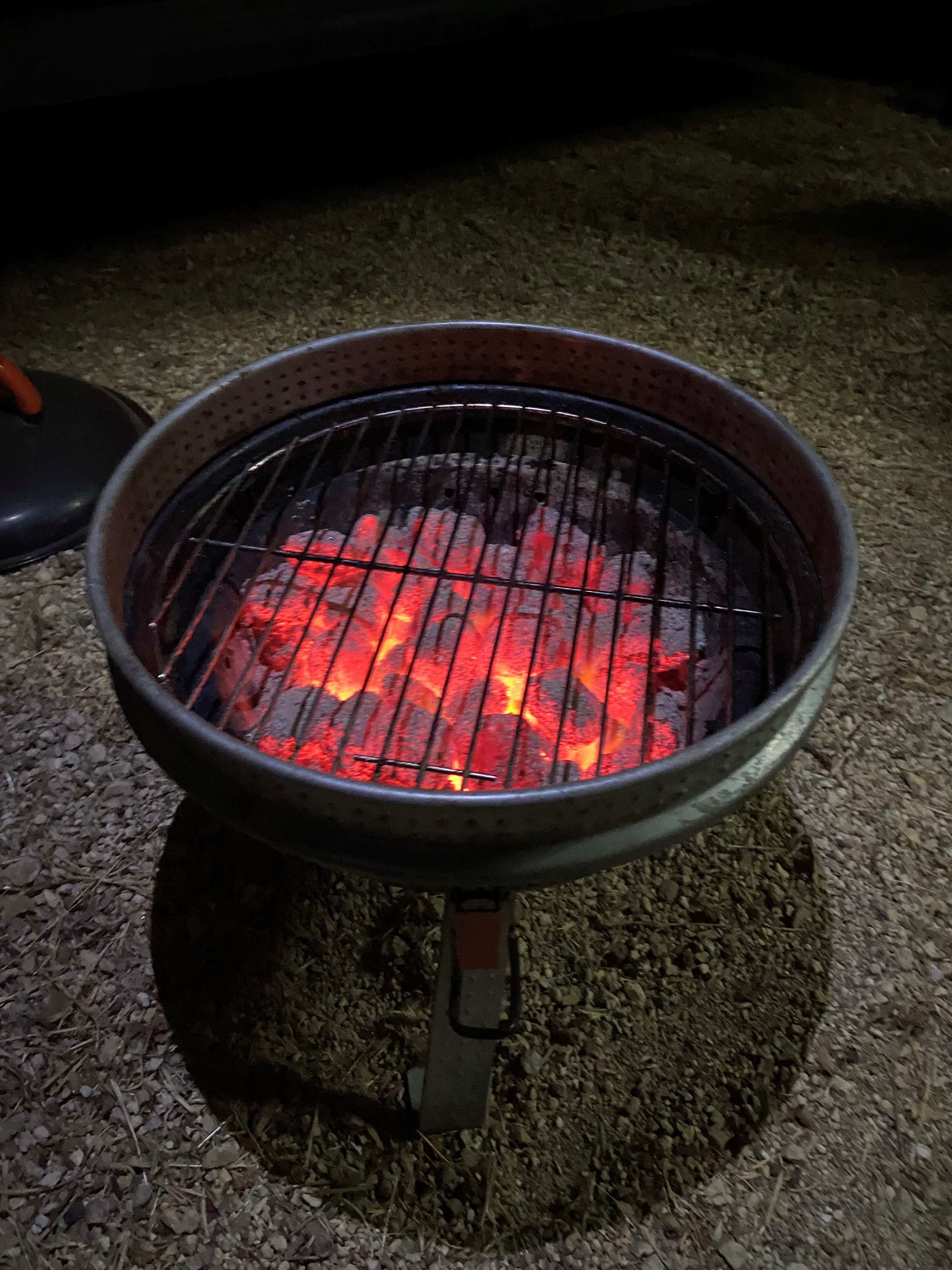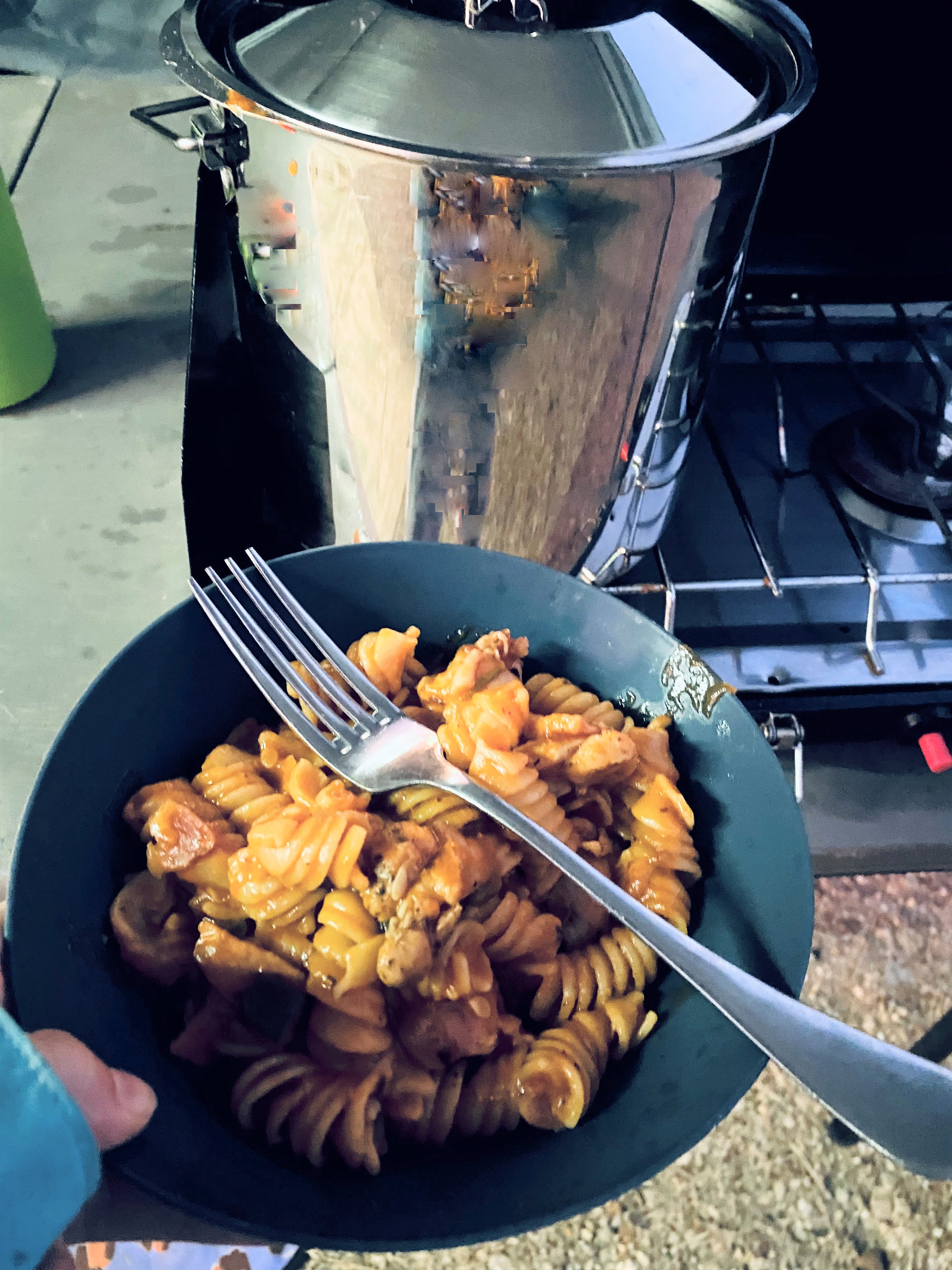Your guide to stress free camp cooking

There’s nothing quite like a family camping trip - surrounded by nature, sleeping underneath the stars, the sounds of the outdoors mixed with the squeals of kids playing and having fun. Camping can be a great way to switch off, relax and reconnect as a family.
When organising food to take on a camping trip, it can be hard to know where to start. Every family has their own approach, which may also vary depending on access to facilities and how much storage you have. One thing is for sure - when planning a camping trip, it helps to plan the meals and snacks before you set off! This will ensure you pack just the right amount to get you through the trip.
What to pack
To ensure the family is well-fuelled and ready for adventure, try to pack foods from all five of the core food groups and choose a range of shelf stable and perishable items to cover all your bases. Foods that are shelf stable do not need to be kept cold, which makes them perfect for camping. Foods that are perishable will need to be kept cold at all times so make sure you have an esky or camp fridge for these items. Don’t forget that once food is cooked, any leftovers will also need to be kept cold.
Below are some shelf stable and perishable ideas from each food group:
* shelf-stable
# perishable
Grains
- wholemeal wraps*
- rice cakes or corn thins*
- muesli or plain oats*
- pasta*
- noodles *
- couscous*
- rice*
Proteins (meat, legumes, dairy and alternatives)
- baked beans*
- plain tinned beans and pulses (e.g., black beans, four bean mix, lentils)*
- cheddar cheese#
- long-life milk (or evaporated milk if space is an issue)*
- tinned tuna*
- eggs#
- natural peanut butter*
- nuts and seeds*
- lean red meat and/or chicken (if you have access to a fridge or esky – best to eat first) #
Fruits
- long-lasting fruit such as apples, pears, and oranges*
- tinned fruit (in juice not syrup) *
- dried fruit with no added sugar*
Vegetables
- tinned vegies such as corn, peas, and beans*
- fresh vegies such as leafy greens (use up first)#
- grilling vegies such as zucchini and mushrooms (grill over the fire or on a BBQ)*
- baking vegies such as potatoes, onion, corn and capsicum (wrap in tin foil and place in coals of a fire or on a BBQ)*
Water!
- Make sure you pack plenty of water! As well as water for drinking, you may need to pack extra water for washing dishes, brushing your teeth, and cooking. A helpful guide is to pack 3-6 litres per person per day - more if it’s hot. If you are staying somewhere with access to tap water that has been treated (just like from your tap at home), then you most likely won’t need to pack as much water.
Putting it all together as a meal
 Looking for a bit of inspo? We’ve compiled a few meal combo ideas to suit all types of camp cooks.
Looking for a bit of inspo? We’ve compiled a few meal combo ideas to suit all types of camp cooks.
Simple camper
Stuffed spuds
Ingredients: reduced salt baked beans, potatoes and cheese.
Wrap potatoes in tin foil and place on the coals or in a closed BBQ or camp oven. Cook for 2-3 minutes. Once the potatoes are soft, remove them from the coals. Unwrap carefully as there may be steam inside. Cut a cross into the top of the potatoes, top with beans and cheese. Wrap and cook for a further 5 - 10 minutes.
Corn pikelets
Ingredients: creamed corn, self-raising flour, milk (fresh or long life).
See the full recipe here.
Tomato and cheese damper
Ingredients: wholemeal flour, baking powder, salt, olive oil, cheese, rosemary, tomato, milk (long life or substitute with water) and water.
See the full recipe here.
Freshly caught
Fish tacos
Ingredients: freshly caught fish filleted and scaled and coated in milk, herbs, and breadcrumbs or crushed crackers, in a tortilla wrap with salad.
Salt and pepper squid
Ingredients: freshly caught squid cut into strings or rings.
Season with salt and pepper. Cook in a camp fry pan or on the BBQ.
One-pot wonders
 One pot pasta
One pot pasta
Ingredients: tinned tomato (with added basil and garlic), tinned lentils, tinned peas, water.
Simmer wet ingredients in a pot for 2-3 minutes, add pasta straight into the sauce, and cook until pasta is soft.
5 ingredient curry
Ingredients: meat cut into bite-size pieces, diced potato, tinned tomato, curry powder, assorted vegies.
Cook meat in a hot pan, once browned add all other ingredients and simmer until potato pieces are soft. Add extra water if needed.
Tomato rice
Ingredients: stock cubes, water, onion, tinned tomato, rice, tinned corn, tinned peas, tinned tuna, cumin or curry powder.
See the full recipe here. (If you do not have access to an oven, swap to a saucepan and a gas burner).
No cook, no fuss
Tuna wraps
Ingredients: tinned tuna, ready-to-eat coleslaw, wholemeal wraps.
Drain tuna, and place in wraps with the coleslaw.
Tomato bean salad
Ingredients: cherry tomatoes, tinned beans, diced avocado, salad vegies.
Drain the beans, cut the tomatoes in half and mix all ingredients together.
Cheats Mexican burrito
Ingredients: refried beans, salsa, tinned corn, cheese and wholemeal wraps.
Drain corn and place all ingredients in the wraps.
Snack pile
- popcorn, carrot sticks, snow peas, fruit, healthy trail mix, roasted chickpeas and grainy crackers all make for tasty, easy, wholesome snacks whilst exploring the natural wonders of WA.
Storage
The last thing you want when camping is spoiled food, or even worse a bout of food poisoning! If you are packing perishable foods such as fresh meats, cheese, or milk remember these need to be kept below five degrees at all times. This is where an esky full of ice or a camp fridge may be needed. If you do not have access to either of these, see our list of shelf-stable alternatives above that will last outside of the fridge (all shelf stable items marked*). Despite being shelf stable, try to store these in a shady or cooler part of the car if possible. Once open, make sure containers or packets are tightly closed to ensure unwanted bugs don’t crawl in.
If you are using an esky, take a big airtight container to put your fresh produce in so that as ice starts to melt your vegies don’t get ice burn from soaking in the chilled water.
If you are using a camp fridge, store your vegies in airtight containers and zip lock bags to prolong freshness and reduce bruising. For more information about food safety see our article on food safety.